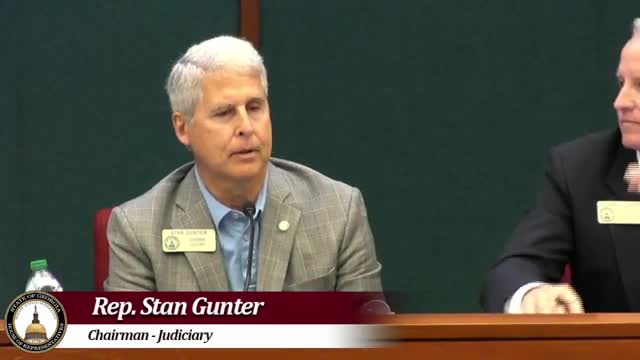Legal battle looms over stream access regulations
August 16, 2024 | HOUSE OF REPRESENTATIVES, Committees, Legislative, Georgia
This article was created by AI summarizing key points discussed. AI makes mistakes, so for full details and context, please refer to the video of the full meeting. Please report any errors so we can fix them. Report an error »

In a recent government meeting, officials discussed the complexities surrounding access to non-navigable streams and the potential legal implications of changing existing statutes. The conversation centered on Title 44, Chapter 8, which outlines the rules governing stream accessibility. Concerns were raised about the possibility of litigation arising from any amendments to these statutes, particularly in areas like Helen, Georgia, where local businesses depend on stream activities such as tubing.
One participant highlighted that property owners along non-navigable streams could potentially restrict access, leading to disputes. The discussion emphasized the need for clarity in definitions of navigability, as current laws date back to 1863 and may not adequately reflect modern usage and public access needs.
Officials considered the idea of empowering the Department of Natural Resources (DNR) to operationalize these definitions while establishing regulatory guardrails to prevent overreach. The aim would be to create a defensible process based on contemporary evidence, such as the location of public boat ramps, rather than solely relying on historical data.
The meeting also touched on the concept of \"takings,\" where changes in navigability could affect landowners' rights, particularly regarding exclusive fishing leases. The potential for litigation remains a significant concern, as any alteration in the legal status of a stream could lead to claims of inverse condemnation, where landowners argue that their property rights have been diminished.
Overall, the discussions underscored the delicate balance between public access to waterways and the rights of property owners, highlighting the need for careful consideration in any legislative changes.
One participant highlighted that property owners along non-navigable streams could potentially restrict access, leading to disputes. The discussion emphasized the need for clarity in definitions of navigability, as current laws date back to 1863 and may not adequately reflect modern usage and public access needs.
Officials considered the idea of empowering the Department of Natural Resources (DNR) to operationalize these definitions while establishing regulatory guardrails to prevent overreach. The aim would be to create a defensible process based on contemporary evidence, such as the location of public boat ramps, rather than solely relying on historical data.
The meeting also touched on the concept of \"takings,\" where changes in navigability could affect landowners' rights, particularly regarding exclusive fishing leases. The potential for litigation remains a significant concern, as any alteration in the legal status of a stream could lead to claims of inverse condemnation, where landowners argue that their property rights have been diminished.
Overall, the discussions underscored the delicate balance between public access to waterways and the rights of property owners, highlighting the need for careful consideration in any legislative changes.
View full meeting
This article is based on a recent meeting—watch the full video and explore the complete transcript for deeper insights into the discussion.
View full meeting
